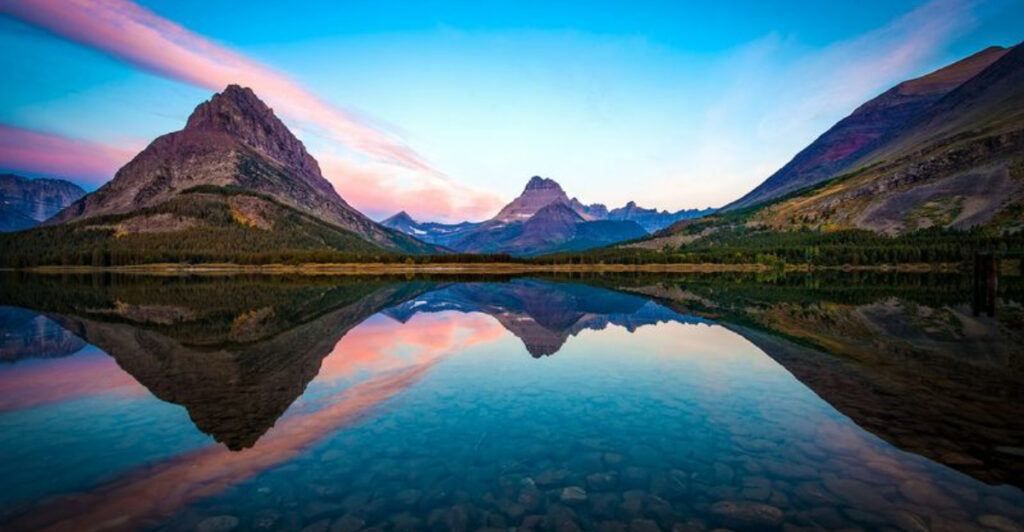Tucked away in Montana’s Rocky Mountains, Glacier National Park stands as a breathtaking testament to nature’s artistry. With over one million acres of pristine wilderness, this majestic park showcases towering mountain peaks, crystal-clear lakes, and ancient ice fields that have shaped the landscape for millennia. Visitors from around the world flock to this natural sanctuary to experience its raw beauty and diverse ecosystems – truly earning its reputation as America’s Alpine Wonderland.
1. Breathtaking Glacial Scenery
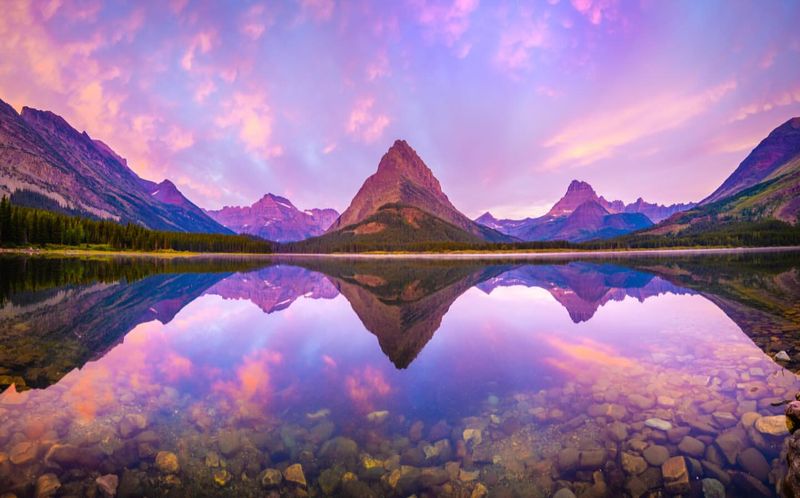
Standing at a viewpoint in Glacier National Park feels like stepping into a landscape painting too perfect to be real. Massive U-shaped valleys carved by ancient ice stretch before you, while jagged peaks scrape the sky above. Alpine meadows burst with wildflowers in summer, creating a colorful carpet beneath the rugged mountains. The park’s nickname, “The Crown of the Continent,” perfectly captures its majestic presence. These geological masterpieces formed over thousands of years as massive ice sheets slowly sculpted the terrain, leaving behind a dramatic landscape that showcases nature’s powerful artistic abilities.
2. Going-to-the-Sun Road
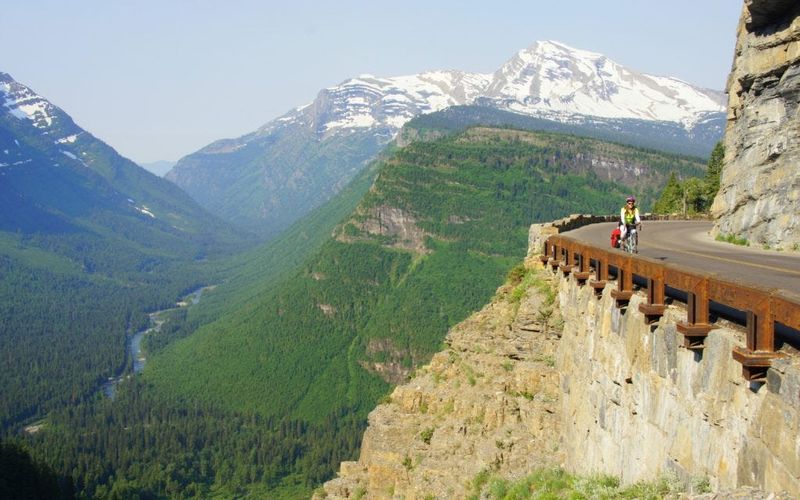
Imagine driving along a narrow mountain road where sheer cliffs drop away on one side and waterfalls cascade down rock faces on the other. This engineering marvel stretches 50 miles across the park, crossing the Continental Divide at Logan Pass. Completed in 1932 after years of challenging construction, the road provides access to some of the park’s most spectacular vistas. Each twist and turn reveals new wonders – from lush valleys to alpine tundra. The road’s name comes from a mountain visible along the route, which according to Blackfeet legend, is where the sun god learned to cross the sky.
3. 700+ Miles of Trails

Adventure awaits around every corner with Glacier’s extensive network of hiking paths. From casual strolls through cedar forests to challenging climbs up mountain passes, the park’s 700+ miles of trails offer something for every explorer. Morning hikes often provide opportunities to spot wildlife grazing in meadows or drinking from crystal streams. The well-maintained paths take you through diverse ecosystems – from lush forests to barren alpine zones above the treeline. Rangers recommend carrying bear spray and hiking in groups, especially on less-traveled routes where surprise wildlife encounters are more common.
4. Trail of the Cedars
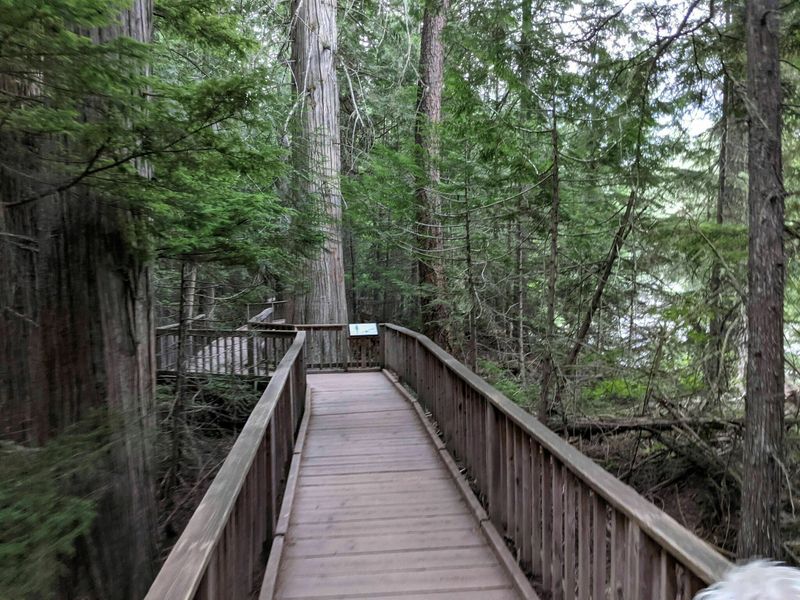
Ancient cedar trees tower overhead like nature’s cathedral, creating a cool, hushed atmosphere even on hot summer days. This wheelchair-accessible boardwalk loop stretches just under a mile, making it perfect for visitors of all abilities and ages. The path follows Avalanche Creek, where rushing water has carved smooth channels through the rock. Interpretive signs explain the unique ecosystem of this inland rainforest, where some trees have stood for hundreds of years. Morning visitors might catch golden light filtering through the dense canopy, creating magical spotlights on the lush forest floor covered in ferns and mosses.
5. Avalanche Lake Hike
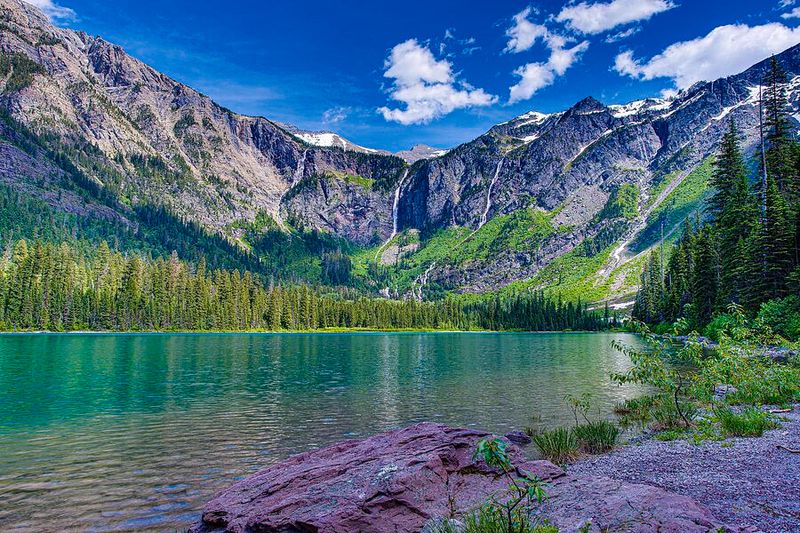
Water thunders down from distant peaks, feeding the pristine alpine lake nestled between towering mountain walls. This moderate 4.6-mile round-trip hike rewards your efforts with one of the park’s most picturesque settings. The trail follows Avalanche Creek through old-growth forest before opening to reveal the stunning lake. Six waterfalls cascade down the headwall at the far end, fed by melting snow and glaciers above. Early morning hikers often find the lake’s surface perfectly still, creating mirror reflections of the surrounding mountains. Pack a lunch to enjoy at the rocky beach while soaking in views that exemplify the raw beauty of the American wilderness.
6. Highline Trail
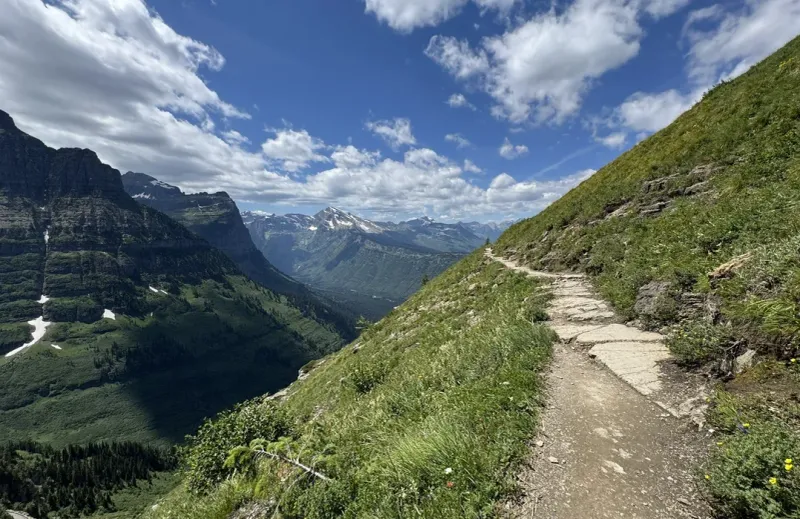
Adrenaline surges as you traverse narrow ledges with breathtaking dropoffs, the famous Garden Wall stretching alongside you. This legendary 11.8-mile trek follows the Continental Divide, offering some of the most spectacular alpine scenery in North America. Mountain goats navigate nearby cliffs with casual ease, while marmots whistle warnings from rocky perches. During July and August, wildflowers paint the slopes in vibrant colors, creating a stark contrast against the gray limestone peaks. The trail’s most famous section features a six-foot-wide path carved into a vertical cliff face with a hand cable for security – not for those with a fear of heights!
7. Logan Pass

Perched at 6,646 feet, this mountain saddle sits at the highest point of Going-to-the-Sun Road, serving as the crown jewel of Glacier’s accessible alpine areas. Summer visitors find themselves surrounded by meadows blanketed with wildflowers – beargrass, glacier lilies, and Indian paintbrush create a natural garden. Bighorn sheep and mountain goats frequently graze nearby, seemingly unfazed by camera-wielding admirers. The Visitor Center offers exhibits about the fragile alpine ecosystem and the effects of climate change on this high-mountain environment. Two of the park’s most popular trails begin here: Hidden Lake Overlook and the Highline Trail, both offering spectacular panoramic views of the surrounding peaks.
8. Stunning Glacial Lakes
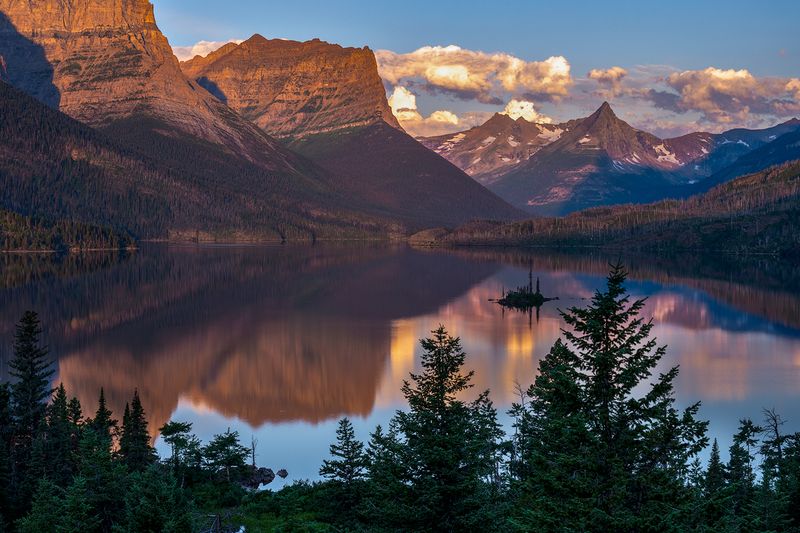
Sunlight dances across Lake McDonald’s crystal-clear waters, revealing colorful stones beneath the surface that look like scattered jewels. This ten-mile-long lake is just one of over 700 in the park, each with its own unique character and charm. St. Mary Lake on the east side offers dramatic views of mountains plunging directly into deep blue waters. Early mornings often provide perfect reflections of surrounding peaks, creating postcard-worthy photo opportunities. Kayakers glide silently across Two Medicine Lake, where moose sometimes wade along the shoreline. These pristine bodies of water were formed by ancient glaciers that carved deep basins in the landscape thousands of years ago.
9. Wildlife Watching
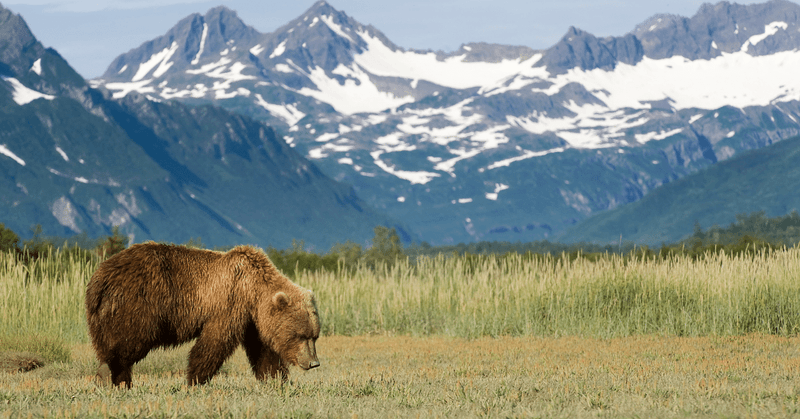
A grizzly bear and her cubs forage in a distant meadow while a mountain goat picks its way across a seemingly impossible cliff face. Glacier National Park serves as a sanctuary for some of North America’s most magnificent wildlife, preserving critical habitat in an increasingly developed world. The park hosts over 70 mammal species, including elusive wolverines, lynx, and wolves. Early morning and evening hours offer the best viewing opportunities, when animals are most active. Rangers emphasize maintaining safe distances – at least 100 yards from bears and wolves, and 25 yards from other wildlife. Binoculars and spotting scopes enhance the experience while respecting animals in their natural environment.
10. Historic Lodging
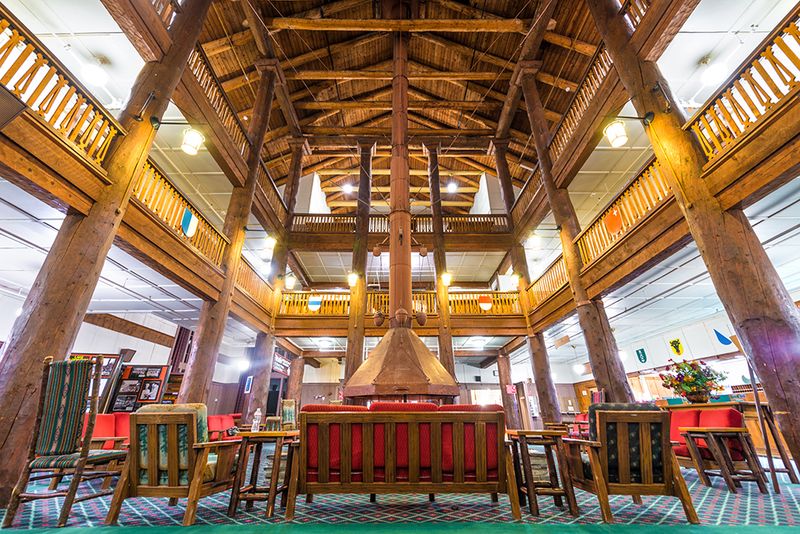
Massive wooden beams frame the lobby of the Many Glacier Hotel, where a crackling fire welcomes tired hikers returning from alpine adventures. Built in 1914-15, this Swiss-inspired lodge offers a glimpse into the golden age of national park tourism. Lake McDonald Lodge features a hunting lodge aesthetic with Native American artifacts and mounted wildlife. The lakeside location provides stunning views and easy access to boat tours. These historic accommodations blend rustic charm with modern conveniences, allowing guests to experience the park much as visitors did a century ago. Rocking chairs on wide porches invite guests to slow down and absorb the majestic landscape that surrounds them.
11. Red Bus Tours
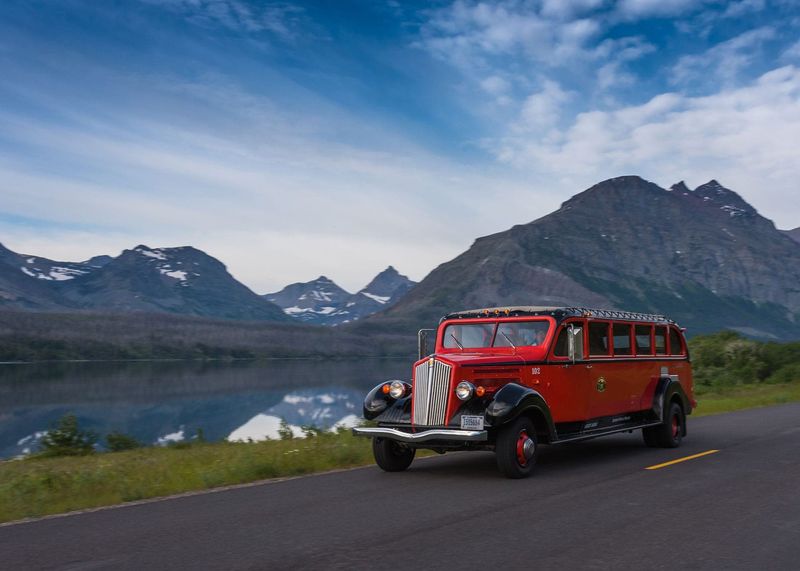
Bright crimson against the green forests and blue sky, these vintage buses have become icons of Glacier National Park. Dating back to the 1930s, the fleet of restored “Red Jammers” provides a unique way to experience the park’s grandeur. Knowledgeable drivers share stories about the park’s history, wildlife, and geology as they navigate mountain roads. The buses’ canvas tops roll back on clear days, allowing passengers unobstructed views of towering peaks and deep valleys. The nickname “Jammers” comes from the sound drivers made when shifting gears on the steep mountain passes. Modern buses maintain their historic appearance while using more environmentally friendly propane fuel systems.
12. Diverse Ecosystems

From prairie grasslands to alpine tundra, Glacier packs remarkable biological diversity into its boundaries. The park’s dramatic elevation changes create distinct life zones, each supporting unique plant and animal communities. Western valleys shelter ancient cedar-hemlock forests where moisture-loving species thrive in the inland rainforest climate. Higher elevations feature hardy subalpine fir and whitebark pine before trees give way completely to alpine meadows. This ecological integrity earned Glacier recognition as both a UNESCO World Heritage Site and Biosphere Reserve. Scientists study these relatively undisturbed ecosystems to better understand natural processes and how they respond to climate change – making the park not just beautiful, but scientifically valuable.
13. Wildflower Blooms
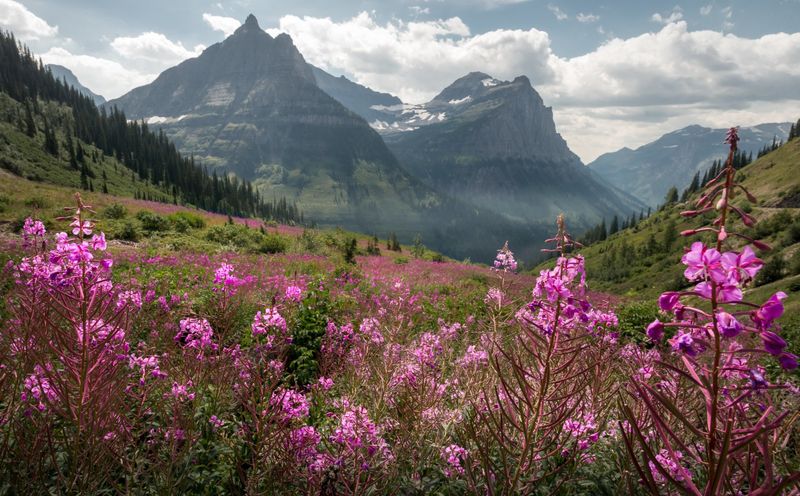
Carpets of vibrant color transform alpine meadows each summer as Glacier’s wildflowers put on their spectacular show. Delicate glacier lilies emerge first, often blooming right at the edge of melting snowfields in a remarkable display of nature’s resilience. The iconic beargrass creates waves of white blooms on hillsides, flowering in massive displays every 5-7 years. These unusual plants stand up to six feet tall, topped with creamy white flower clusters that seem to float above the landscape. Logan Pass becomes a botanical wonderland in July and August, with Indian paintbrush adding splashes of red among the purple lupine and yellow balsamroot. This fleeting display represents the brief growing season at high elevations.
14. Cultural History & Indigenous Ties
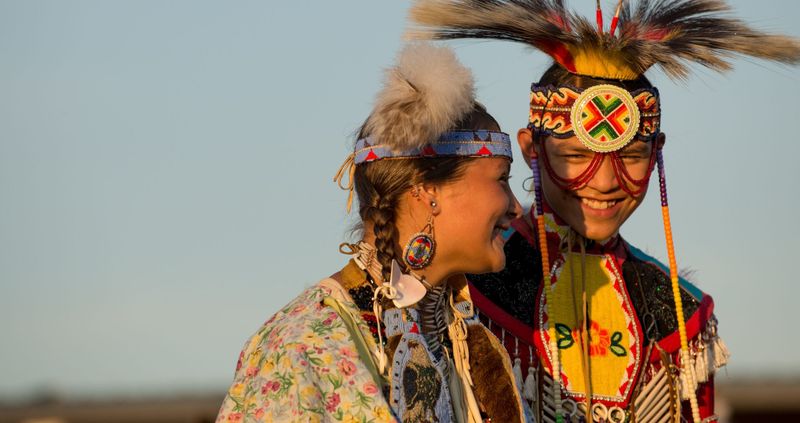
Long before becoming a national park in 1910, these mountains were home and sacred ground to Native American tribes. The Blackfeet called the area “Backbone of the World,” recognizing its spiritual and practical importance in their culture. Archaeological evidence reveals human presence dating back over 10,000 years. The land provided hunting grounds, medicinal plants, and materials for tools and shelter for generations of Indigenous peoples. Today, the nearby Museum of the Plains Indian in Browning showcases Blackfeet heritage through art, clothing, and cultural exhibits. Park rangers incorporate Indigenous perspectives into educational programs, acknowledging the deep human connection to this landscape that far predates its national park status.
15. Year-Round Beauty
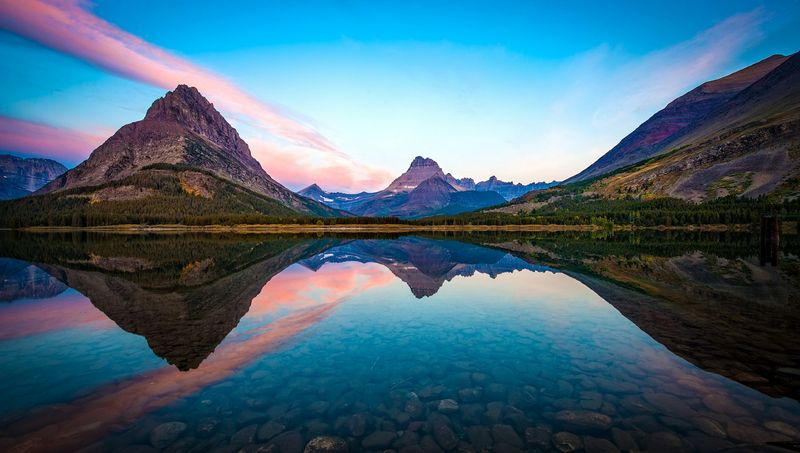
Summer sunlight illuminates emerald lakes while winter transforms the landscape into a silent wonderland of snow-draped peaks. Each season in Glacier reveals different facets of the park’s character and beauty. Spring brings rushing waterfalls and the first wildflowers as winter’s grip loosens. Fall paints the valleys with golden larch trees and crimson huckleberry bushes, while crowds thin and wildlife becomes more active preparing for winter. Winter offers solitude and pristine snow-covered landscapes for those willing to brave the elements. Cross-country skiing and snowshoeing become the primary means of exploration, with Lake McDonald Lodge area and Apgar Village serving as popular starting points for winter adventures.

